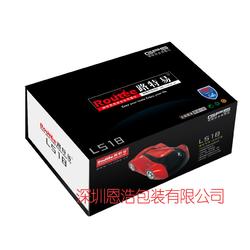Title: Foam Packaging Boxes: A Comprehensive Guide
Foam Packaging Boxes: A Comprehensive Guide
Foam packaging boxes play a crucial role in protecting goods during transit and storage. Whether you're shipping fragile items or looking for secure storage solutions, understanding foam packaging materials and techniques is essential. In this guide, we'll delve into the world of foam packaging boxes, exploring their types, benefits, and best practices.
Foam packaging materials come in various types, each suited to different packaging needs:
- Expanded Polystyrene (EPS) Foam: Commonly known as Styrofoam, EPS foam is lightweight and provides excellent cushioning. It's ideal for protecting fragile items.
- Polyurethane Foam: Polyurethane foam offers superior shock absorption and is often used for heavy or delicate items.
- Polyethylene Foam: This foam is durable, flexible, and moistureresistant, making it suitable for a wide range of applications.
- EVA Foam: Ethylenevinyl acetate (EVA) foam is soft, flexible, and nontoxic. It's commonly used for cushioning and padding.
Using foam packaging boxes offers several advantages:
- Shock Absorption: Foam packaging absorbs shocks and vibrations during transit, protecting items from damage.
- Customizability: Foam can be cut and molded to fit the shape of the product, providing a snug and secure fit.
- Lightweight: Foam is lightweight, reducing shipping costs without compromising on protection.
- Insulation: Certain types of foam provide thermal insulation, keeping products at stable temperatures during transport.
- Recyclability: Many foam packaging materials are recyclable, reducing environmental impact.
Follow these best practices to ensure effective foam packaging:
- Choose the Right Type: Select foam packaging material based on the fragility and size of the items being packaged.
- Proper Sizing: Ensure foam inserts are properly sized to provide a snug fit around the product.
- Layering: Use multiple layers of foam for added protection, especially for extremely delicate items.
- Secure Sealing: Seal foam packaging boxes securely to prevent shifting during transit.
- Labeling: Clearly label packages as "Fragile" or "Handle with Care" to alert handlers to exercise caution.
- Environmental Considerations: Opt for ecofriendly foam materials and explore recycling options to minimize environmental impact.
Foam packaging boxes are indispensable for ensuring the safe transportation and storage of fragile items. By understanding the different types of foam materials available, their benefits, and best practices for usage, you can enhance the protection of your products while minimizing the risk of damage. Invest in quality foam packaging solutions to safeguard your goods and deliver a positive customer experience.


